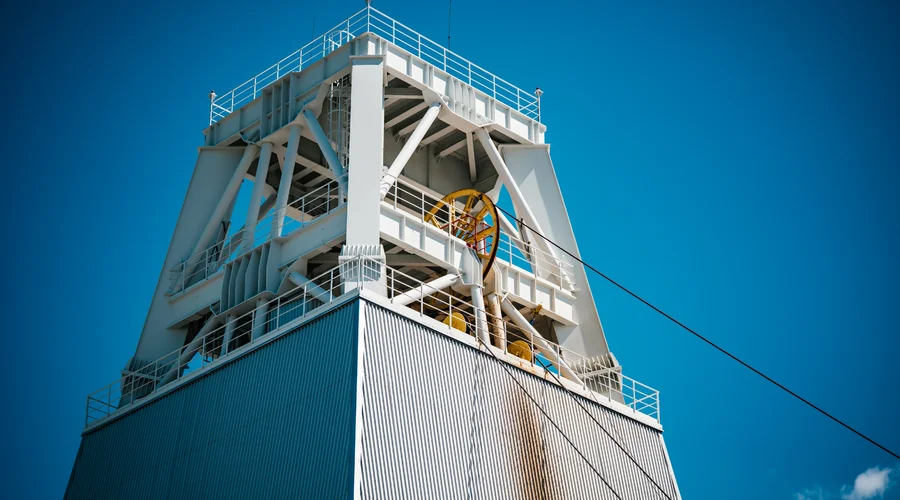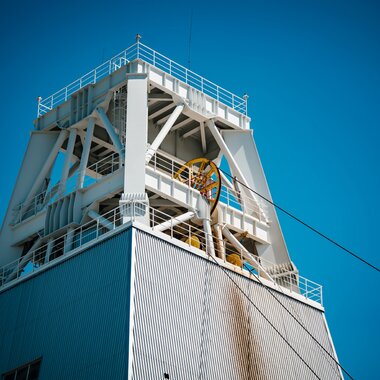KGHM begins work on building three new mine shafts
KGHM Polska Miedź S.A. will build three new mine shafts in the Copper Basin. The Company's Management Board has decided to commence geological and hydrogeological exploration work for the GG-2 'Odra', Retków and Gaworzyce projects. This is a landmark moment for the long-term development of KGHM and the future implementation of the development plan for the concessioned deposits. The estimated cost of the entire investment project will be a minimum of PLN 9 billion.
The geological and hydrogeological exploration is planned to start in July-August this year. The work will continue until 2027 at the latest. This is the first stage of activities related to the future construction of three new shafts for the Rudna and Polkowice-Sieroszowice Mines. The main contractors for the task will be PeBeKa S.A. and Cuprum sp. z o.o. Research and Development Centre, both members of the KGHM Group.
INVESTING IN THE FUTURE
“As previously announced, we have decided to start preparatory work for the projects involving the construction of three new shafts. These are essential investments that are of strategic importance for the future of KGHM and the Copper Basin. They will ensure our safe and stable operation in the coming decades,” said Andrzej Szydło, President of the Management Board of KGHM Polska Miedź S.A. “A significant factor supporting the acceleration of investment in projects critical to the Company's future was the announcement of changes to the so-called copper tax formula. The new shafts will enable us to continue to mine the existing concessioned and prospective deposits and will be a key element in the operation and development of KGHM’s Core Production Business. This is particularly important in today's geopolitical environment, where critical raw materials, including copper, play an increasingly important role not only in the business context, but also as regards public security,” he added.
“The decision to start geological-hydrological exploration for the Retków, Gaworzyce and GG-2 ‘Odra’ shafts is a milestone in the development of both the Rudna and Polkowice-Sieroszowice Mines and KGHM as a whole. The efficient completion of this stage will enable us to precisely determine the geological conditions for the individual sites and thus select the optimum technology and type of casing for the shafts. This will have a fundamental impact on both the timing of the entire investment project and the financing required,” said Zbigniew Bryja, Vice President of the Management Board of KGHM Polska Miedź S.A. for Development.
“Our priority is to involve, as regards the advancement of key investments, first and foremost entities that have know-how and vast experience in carrying out complex mining projects. Cooperation with the companies of the KGHM Group, which have highly qualified staff, will allow the project work to be carried out efficiently,” said Piotr Stryczek, Vice President of the Management Board of KGHM Polska Miedź S.A. for Corporate Affairs. “The development prospects of the Copper Basin are also an additional advantage - the investment projects will have a positive impact on the local labour market,” he added.
KGHM SHAFTS
The entire process associated with the construction of a new mine shaft is spread over a period of over ten years, with expenditures of several billion zlotys, depending on, among other things, the shaft’s purpose, depth and the geological strata present in its planned location. The geological and hydrological exploration stage makes it possible to precisely determine the target location of the shaft based on detailed geological investigations carried out by means of, among other things, research and observation boreholes. It also aims to select the best digging technology and determine the depth of the frozen rock mass.
KGHM currently operates 28 mine shafts in Poland (7 in the Lubin Mine, 11 in the Rudna Mineand 10 in the Polkowice-Sieroszowice Mine). Historically, KGHM has dug 31 shafts, but three of these have already been decommissioned in the depleted portions of the deposit. The new Retków and GG-2 'Odra' shafts will ultimately serve as material and transport shafts, while the Gaworzyce shaft will be a ventilation shaft. The company is also working on the installation of equipment in the GG-1 shaft, which is currently used for ventilation purposes and will eventually also be used for material and transport functions. The GG-1 shaft was sunk to its full depth of 1,348 metres and was integrated with the underground workings in 2023.








